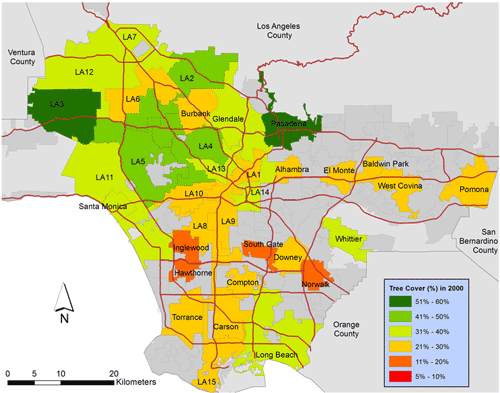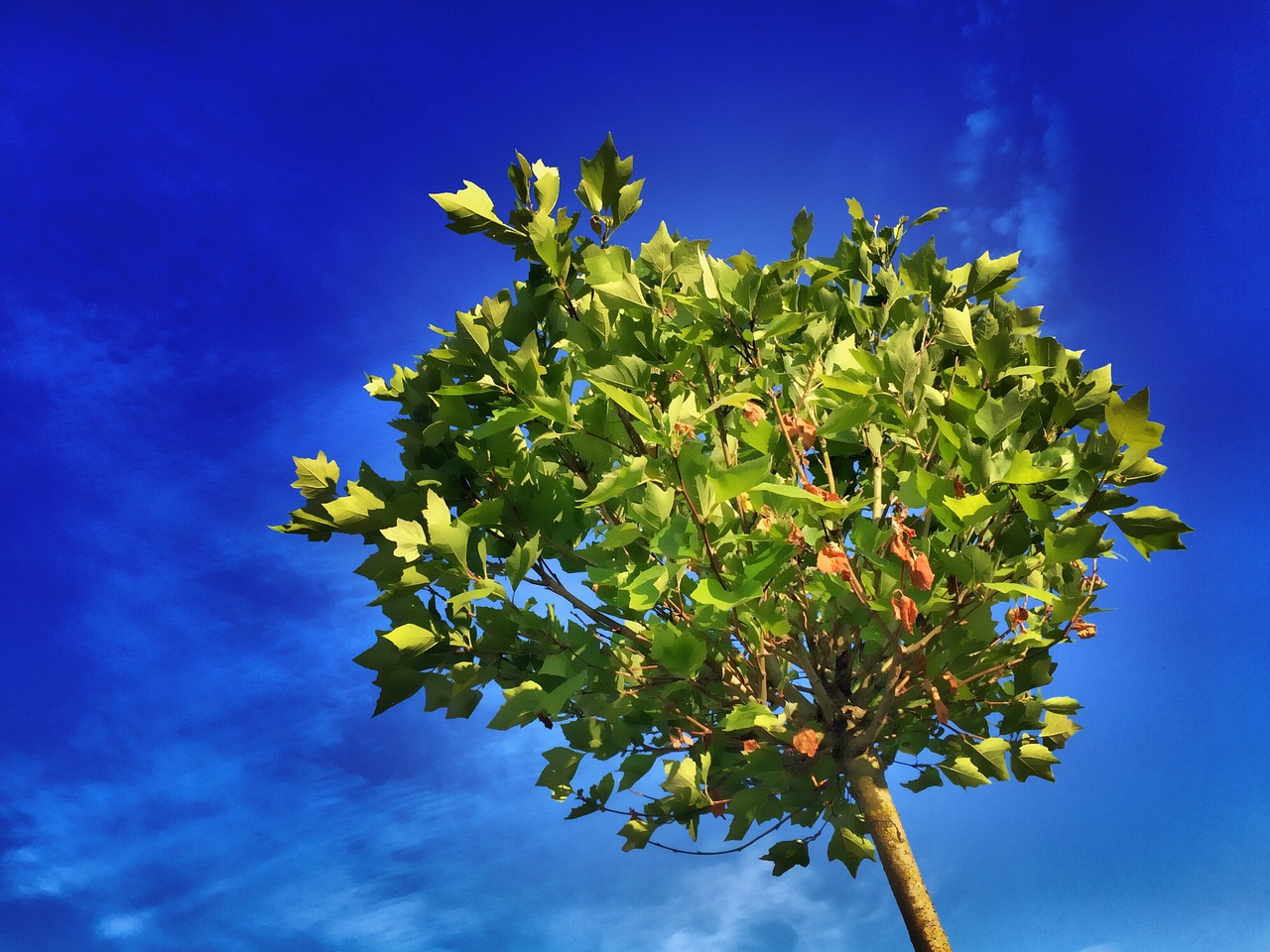By Oscar Perry Abello.
When it comes to environmental justice, the focus is often on where things get placed and what impact do those things have on their surroundings. A garbage dump or a waste processing facility in a historically black neighborhood, for instance. But there’s also what doesn’t get placed, and what gets lost.
Trees and green space, for instance, have been linked to better school performance in study after study after study. So it should matter to more than urban designers and environmental activists that parts of the Los Angeles region lost as much as 55 percent of their green cover from 2000 to 2009, according to researchers at the University of Southern California’s Spatial Sciences Institute.
The researchers used high-resolution digital aerial imagery to make their determinations, focusing on trees and shrubs on single-family home lots. Here’s their visualization of the tree cover loss:

They say the change is due to a desire for bigger houses, and an increase in paved surfaces like swimming pools. From a news release about the findings:
A decade after the housing bust, property development in the age of home improvement reality television is as ambitious as ever, with new homes reaching 2,687 square feet, and nearly one-third more than 3,000 square feet, according to the U.S. Census Bureau’s annual survey in 2016.
Municipalities also often encourage redevelopment as a way to increase tax revenues.
[divider] [/divider]





